- Home
- Walter Scott
Ivanhoe (Barnes & Noble Classics Series) Page 3
Ivanhoe (Barnes & Noble Classics Series) Read online
Page 3
Unlike the magnanimous Rebecca, however, Rowena’s more dangerous rival never quits the scene. Ivanhoe’s true love object is chivalry itself, his knightly career, of which Richard is merely the earthly embodiment. Rebecca recognizes the unhealthy grip of chivalric ideology on Ivanhoe’s imagination and, in terms that seem uncannily to anticipate Mark Twain, does her best to disabuse him: “Is there such virtue in the rude rhymes of a wandering bard, that domestic love, kindly affection, peace and happiness, are so wildly bartered, to become the hero of those ballads which vagabond minstrels sing to drunken churls over their evening ale?” (p. 293). As Cervantes makes plain in his grand satire of chivalry, Don Quixote (1605), knight-errantry was always more a literary phenomenon than an historical one, and Rebecca perceives that Ivanhoe’s self-image is essentially poetic, not a thing of the world. In mockingly pointing this out, Rebecca casts an ironic light on the generic complexities of Scott’s own project, where history lays perpetual siege to the glitter of romance, in fact to literature itself. Scott’s novel might have spawned a global fad for jousting and knights-errant, but his historical critique of chivalry is sincere.
In his essay “Chivalry,” written just prior to Ivanhoe for the Encyclopaedia Britannica, Scott shows that he has far fewer illusions about the romance of chivalry than generations of his readers. Because “every institution becomes deteriorated and degraded” by our animal passions, he argues, the chivalric knights of the Middle Ages stood little chance of fulfilling their lofty union of chastity and righteous militarism: “the devotion of the knights often degenerated into superstition,—their love into licentious-ness, —their spirit of loyalty or of freedom into tyranny and turmoil, —their generosity and gallantry into harebrained madness and absurdity” (Miscellaneous Prose Works, vol. 6, p. 166). Chivalry, in Ivanhoe, is a form of male self-love that draws its avatars into aggressively homo-social communities such as the Templar Knights or, in the individual case of Ivanhoe, renders him unable properly to love his family, his home, or (we can guess) his wife, preferring instead the wandering life with his fellow narcissist knights. As Wamba the jester is fond of saying, knightly valour is ever the companion of the fool. Even Ivanhoe’s fascination with Rebecca can be read as an extension of self-defeating chivalric desire, of his inability to settle down. The Crusades introduced the exotic, dark-complexioned heroine to the West, and the homeward-returning knights of Ivanhoe have still not left Palestine as a dreamland of desire. According to the orientalist logic of the chivalric romance, Rowena cannot but seem disappointing to Ivanhoe after the seductions of the East, hence the perfunctoriness of his pursuit of her. Rowena might be the blond queen of Ashby, but Rebecca, for both Ivanhoe and Bois-Guilbert, is Jerusalem itself: the irresistible but unreachable goal of the chivalric quest for whom they end up fighting each other rather than the Saracens. It would be wrong to simply equate Ivanhoe with Bois-Guilbert, however. While Ivanhoe’s desperate ride to Templestowe reinforces his militant Christian identity, Bois-Guilbert effectively renounces his knighthood on the field there. He has attempted to break out of chivalric self-love through his passion for Rebecca, and her refusing him that exit forces a kind of libidinal implosion: “yonder girl hath wellnigh unmanned me” (pp. 401-402). To this extent then, it is Bois-Guilbert, not the hometown boy Wilfred, who most represents the condition of England, which, like a spurned suitor, is suffering under a king who does not return the violent love of his people.
King Richard’s reign is more than the setting of Ivanhoe. It is, in important respects, its subject. The early nineteenth century—with its museums and new academic formations—effectively invented History, and Scott was the first writer successfully to commercialize the new nostalgia. The great majority of his nearly thirty novels, beginning with Waverley in 1814, are excursions into the Scottish, English, and European past, and his enormous popularity established the historical novel as a literary genre. For the reader, this places a special importance on understanding at least the basic lineaments of the period setting. The action of the novel takes place in the summer of 1194, with King Richard still a prisoner of Leopold, duke of Austria, his erstwhile ally on the failed Third Crusade. More than a century has passed since the Norman Conquest of Britain was secured at the Battle of Hastings, and the Saxons—in Scott’s time the great colonizers of the world—find themselves a colonial outpost of the Franco-Roman commonwealth of Europe. The thirty-year reign of the great Plantagenet king Henry II had brought stability and the rudiments of rule of law to the unconsolidated British Isles, but as a Frenchman, and the ruler of considerable domains in France and elsewhere, Henry spent less than a third of his reign in England. His son Richard, called Lion-Heart, is even less attached to his island dominion. The historical Richard spoke only French and spent but a few months of his ten-year reign on English soil. He joined the Third Crusade to Jerusalem almost immediately after his accession to the crown in 1189, and was ultimately killed a decade later in Belgium, fighting one of innumerable internecine skirmishes among the Plantagenet rulers of western Europe. His last thoughts were not of England, his neglected kingdom, but of the archer who had inadvertently killed him and whom he wished to pardon. This in a nutshell is Richard, for whom the rites of chivalry meant so much more than the duties of kingship. Even his death is a personal affair between warriors, not a matter of state. It is almost fitting that the unfortunate archer was flayed alive, to show how little the fantasies of chivalric beneficence extended into twelfth-century reality. Scott, of course, rehabilitates Richard to a great extent. He bestows on him at least the desire to be a better king, but this is no less a romantic fiction of Ivanhoe than his carousing with Friar Tuck or speaking fluent Saxon.
Richard’s prolonged absence from England in the 1190s created a vacuum of power and a return to the political instability of a half century before, when the first family of Norman kings had exhausted themselves fighting a two-front war against the local population and ambitious French barons. In Ivanhoe, the ambitious rival is Richard’s own brother, John, and the embers of Saxon resistance flare once more in the shape of Ivanhoe’s father, Cedric, the arch-nostalgist who dreams of a return to Pre-Norman days and the renewal, through the union of his noble cousin Athelstane with Rowena, of the ancient line of King Alfred. But if Cedric thinks in terms of ancient blood, he lives in a modern world of money. The Norman barons—those for whom the Crusades were a folly—have shown, in the absence of the King, an insatiable appetite for taxes and the extra-legal appropriation of Saxon land. Their self-aggrandizement is further funded, in turn, by the Jewish moneylenders, represented in Scott’s novel by Rebecca’s father, Isaac. Almost everyone in the novel, from Ivanhoe to Robin Hood to Prince John himself, is indebted to Isaac, whose tense and ambivalent relationship with his clients is modeled on Shakespeare’s Shylock. Like Shylock, Isaac’s representation as a gross anti-Semitic stereotype is mitigated by Scott’s evident sympathy for his suffering at the hands of Christians and, more importantly, his deep love for his daughter. It is striking that the Jews of the novel fund both the hero’s appearance at the Ashby tournament (as well as John’s production of the event itself) and heal his wounds after it. Ivanhoe’s career, we must infer, is not self-sustaining, and the chivalric ethos of beneficence and charity no substitute for responsible government. England’s condition, as a leaderless state without standard currency or centralized system of credit, is, as Scott puts it, “sufficiently miserable” (p. 84). While the knights defend their honor and prose on about the purity of their souls, it is the Jews who hold the world of Ivanhoe together. We fear for England at the novel’s conclusion when Rebecca announces that she and her father are to leave the country. By sending Isaac and Rebecca away to Moorish Spain, Scott presages the disastrous expulsion of the Jews from England a century later.
Such is the broad historical backdrop to the novel. But the subtitle of Ivanhoe describes it as a “romance” not a “history,” and Scott certainly plays fast and loose with historical de
tail. The most striking image of the opening chapter, Gurth’s iron collar declaring him to be a serf of Cedric’s, is simply made up, and the novel’s most famous scene, the tournament at Ashby, has no historical foundation earlier than the fourteenth century. In his fascinated description of clothing, heraldry, and domestic interiors, Scott felt little qualm in borrowing from sources spanning a century or more, and this is to say nothing of his description of startled characters as “electrified,” perhaps the most notorious anachronism in English fiction. Indeed, for all its rich weave of Saxon and Norman vocabulary, the language spoken by the characters is entirely bogus, a pseudo-medieval patois Scott patched together from the Elizabethan canon of Shakespeare and the King James Bible. The stagy feel of the novel is due in large part to the characters’ tendency to declaim and sermonize as if before a large audience.
Critics have long taken Scott to task for this form of novelistic license, but from the very beginning of his text Scott assumes an ironic relation to historical writing. When Ivanhoe first appeared in 1819, Scott had not yet acknowledged authorship of any of his novels. To the titillated press, he was the “Great Unknown”: Scott’s attachment to his barely credible anonymity (almost everyone saw through it) is difficult to understand beyond his abiding passion, shared by so many of his characters, for feint and disguise. An instance of this appears in the form of the “Dedicatory Epistle” to Ivanhoe, in which Scott, writing under the name “Laurence Templeton,” defends himself in advance against the petty corrections of the “dry as dust” historians, and even provides a fictional source for his tale, an Anglo-Norman manuscript belonging to Sir Arthur Wardour, himself a character in one of Scott’s earlier novels. As far as literal historical truth in the novel is concerned, we should take Scott’s prefatory follies to heart, and take an expansive, “romantic” view.
But this is not to say we should not take the historical lessons of Ivanhoe seriously. Scott’s most acute critic, György Lukács, extends the argument of Scott’s preface to challenge all those readings of the novel that equate its historical pastiche with shallow theatricality or, in the common phrase of contempt invented for Scott, mere “tushery.” “Scott’s greatness,” declares Lukács in his seminal work The Historical Novel, “lies in his capacity to give living human embodiment to historical-social types... [his] way of presenting the totality of certain transitional stages of history” (p. 35). Scott’s choice of historical subject is never accidental, far less ornamental. Heroes such as Ivanhoe or Edward Waverley might think of themselves romantically, but they are not themselves romanticized. Both are examples, says Lukács, of Scott’s distinctly modern “middling” heroes, whose imaginations far outstrip their real achievements. After his flirtation with the Jacobite Rebellion of 1745, Waverley retreats to his safe English estate and the bland anonymity of an English gentleman. Ivanhoe likewise has his day of glory at Ashby, only to recede thereafter into pale ineffectuality. His behavior during the battle for Torquilstone—where, from his sickbed, he encourages Rebecca’s lurid commentary on the fighting—is particularly pathetic, like a rabid sports fan shouting at the television. Then, when his spirit finally revives for the showdown with Bois-Guilbert at Templestowe, Scott denies his hero the crowning chivalric deed he so desperately desires. Ivanhoe does not so much as scratch his Templar foe: Bois-Guilbert merely self-destructs.
For Lukács, Ivanhoe’s chivalric failures should not be confused with a literary failure by the novelist. Scott’s cool description of King Richard as “brilliant, but useless” could apply equally to Ivanhoe, and typifies the realism of his treatment of individual characters. It is this ironic detachment that appears “modern” to us when reading Ivanhoe. Scott reserves his romantic nostalgia not for people but for periods, for “the ruination of past social formations” (p. 55). In other words, Scott de-emphasizes his hero in Ivanhoe in order to bring into clearer focus his true subject: the transformation of medieval Saxon society as expressed in popular life, through its living participants. Scott’s famous detail-work-the clothes, the food, the scenery—is thus more than simply “color,” more than a mere screen of dubious authenticity: It is the raw material of a fully realized historical scene through which his thinking, feeling characters move, and though they rarely appear to us as real in the modern, psychologically detailed sense (Bois-Guilbert is the notable exception), they fulfill Scott’s purpose as vivid social beings, as genuine spirits of the age.
The novel opens amidst the ruins of one social formation, Saxon feudalism, and observes the embattled progress of its Anglo-Norman successor. Neither Cedric, with his fixation on Athelstane and Saxon restoration, nor the rapacious French barons and their scheming leader, Prince John, come off well. Front de-Boeuf, the blackest Norman villain, is both a serial rapist and a parricide, and the death-chant of his aged Saxon concubine, Urfried, is the most graphic indictment of Norman brutality in the novel (as well as its most unreadable scene: Scott’s melodramatic staging of the fall of Torquilstone has not aged well). With both the established Saxon and Norman orders subject to stringent critique, Scott reserves his considerable romantic sympathies for a third, marginal group, who live literally in the shadow of the greater Saxon-Norman struggle, in the arboreal gloom of Sherwood. Scott never fails to describe Sherwood—the quintessential English redoubt, the fabled greenwood of Shakespeare—with real poetry. It is a place, both symbolic and real, over which neither Saxon lord nor French knight can claim dominion: “The travellers had now reached the verge of the wooded country, and were about to plunge into its recesses, held dangerous at that time from the number of outlaws whom oppression and poverty had driven to despair, and who occupied the forests in such large bands as could easily bid defiance to the feeble police of the period” (p. 191). The chief outlaw is, of course, Robin Hood. Borrowed from folk legend, the merry men of Sherwood serve multiple trans-historical functions. Their stable self-government is designed to express a primordial English form of natural justice, while their undemonstrative decency and industry look forward to the bourgeois ideals of the nineteenth century. Robin’s Sherwood is a primeval world, a fantasy of yeoman England that is the most romantic and least historical aspect of the novel. But in its idealization of Robin of Locksley, Ivanhoe adheres to, and in fact did much to sustain, the grand historical narrative of English liberalism, which traces its roots from the Magna Carta of 1215, to the creation of a uniquely British “mixed monarchy” in the bloodless revolution of 1688, to the Reform Bill of 1832. Robin Hood, so the story runs, is the reason England never needed a French Revolution. The outlaws of the greenwood will prevail over the course of the centuries, subtly subduing the hot blood of French tyranny and breeding the soul of English liberty in its stead. As such, the merry men’s disciplined performance during the attack on Torquilstone Castle speaks more to England’s recent triumph over the French on the field of Waterloo than to any realistic evocation of the rude Saxon-Norman struggles of the Middle Ages. The band of outlaws comports itself like a modern professional army. As Front-de-Boeuf tells his skeptical fellow Norman, Maurice de Bracy, when he shows contempt for the force advancing on Torquilstone, “Were they black Turks or Moors, Sir Templar... but these are English yeomen, over whom we shall have no advantage” (p. 243). Once Norman fanaticism has exhausted itself, Scott implies, it is these steady outlaws who will inherit England as its sensible and fair-minded middle class, and provide its sons as soldiers for her defense.
Robin, like his chivalric counterparts, has a penchant for disguise: he is a “nameless man” who employs a quiverful of pseudonyms—Locksley, Bend-the-Bow—when venturing into the treacherous post-Conquest world of castles and tournaments. Under the canopy of Sherwood, however, he assumes the open and natural disposition of a benevolent king. His court is the great oak tree, overhanging his “throne of turf” (p. 317). Many versions of the legend represent Robin Hood as a dispossessed Saxon lord, not unlike Ivanhoe. But Scott deliberately reduces his rank to yeoman and idealizes the Sherwood
gang as a community of equals over which Robin rules by consensus, not fiat. The nineteenth-century Ivanhoe spin-offs, on page and stage, mostly surrounded Rebecca. But she, along with Ivanhoe and even Richard the Lion-Heart, have virtually vanished from popular consciousness, leaving Robin Hood the most enduring character of Scott’s ensemble. If, in the aftermath of the American Civil War, Ivanhoe represented to dispossessed southern planters an ideal of themselves that would never be historically realized, then Robin Hood, the depredations of Hollywood notwithstanding, remains for us a figure of muscular egalitarian democracy (robs from the rich; gives to the poor), which, combined with the environmentally friendly occupation of the greenwood by his merry men, stands as a model of human community the citizen of the twenty-first century can hope to find only on a movie screen, or in the pages of Ivanhoe.
But why does Robin Hood render up his liberty so readily to a Norman king, especially one who has done so little to deserve his loyalty? The answer brings us back to Scott’s theme of necessary mixture, but with a more conservative political inflection. It is a revealing irony that, as Scott was writing Ivanhoe, the political consensus surrounding English liberty that he evoked in the glades of twelfth-century Sherwood was under as great a threat as at any time in its history. The influx of returning soldiers to Britain in the aftermath of Waterloo, combined with years of bad harvests and crushing national debts, had brought the country to the brink. The summer of 1819 saw violent clashes between government militias and the growing urban working class concentrated in the north. Particularly notorious was the so-called Peterloo Massacre in August, in which a dozen unarmed protesters were slaughtered at the hands of the national guard. Scott interrupted his writing of the third volume to contribute a long editorial in defense of the government, and it is his often rabid conservatism in this period—as the self-appointed “laird” of his grand estate at Abbotsford—that explains his rehabilitation of King Richard in Ivanhoe, and why he places such emphasis on the automatic obeisance of Robin Hood and his men to the King. Robin’s homage to Richard drives a wedge between him and Cedric, as it does between Cedric and Ivanhoe, but Scott’s romantic inflation of the Sherwood scenes leaves no doubt as to his sympathies and the overall purpose of the novel.

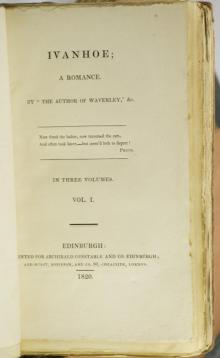 Ivanhoe: A Romance
Ivanhoe: A Romance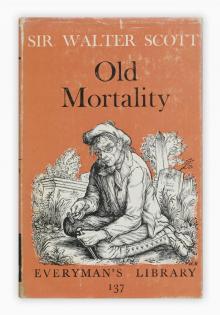 Old Mortality, Complete
Old Mortality, Complete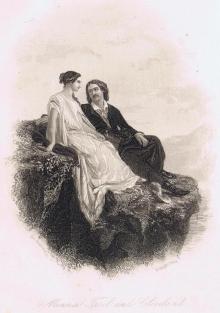 The Pirate
The Pirate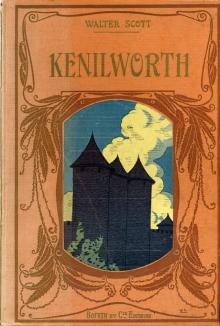 Kenilworth
Kenilworth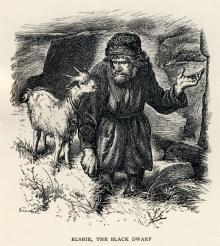 The Black Dwarf
The Black Dwarf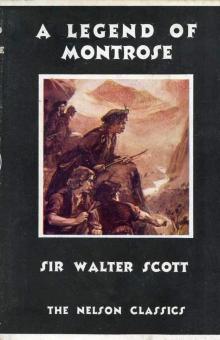 A Legend of Montrose
A Legend of Montrose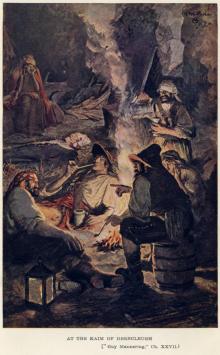 The Monastery
The Monastery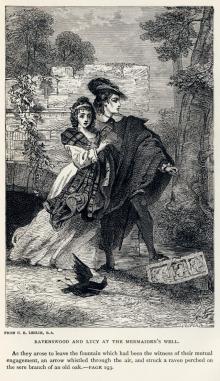 The Bride of Lammermoor
The Bride of Lammermoor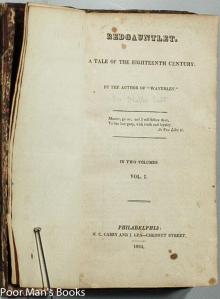 Redgauntlet: A Tale Of The Eighteenth Century
Redgauntlet: A Tale Of The Eighteenth Century St. Ronan's Well
St. Ronan's Well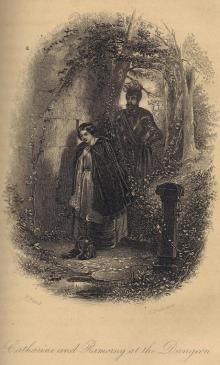 The Fair Maid of Perth; Or, St. Valentine's Day
The Fair Maid of Perth; Or, St. Valentine's Day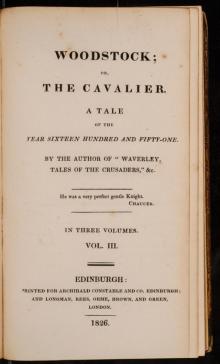 Woodstock; or, the Cavalier
Woodstock; or, the Cavalier_preview.jpg) Anne of Geierstein; Or, The Maiden of the Mist. Volume 1 (of 2)
Anne of Geierstein; Or, The Maiden of the Mist. Volume 1 (of 2)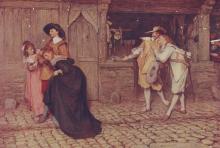 Peveril of the Peak
Peveril of the Peak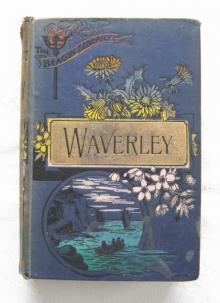 Waverley; Or, 'Tis Sixty Years Since
Waverley; Or, 'Tis Sixty Years Since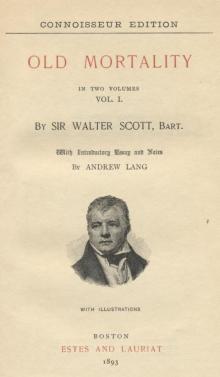 Old Mortality, Volume 1.
Old Mortality, Volume 1. Waverley Novels — Volume 12
Waverley Novels — Volume 12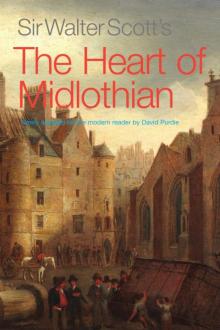 The Heart of Mid-Lothian, Complete
The Heart of Mid-Lothian, Complete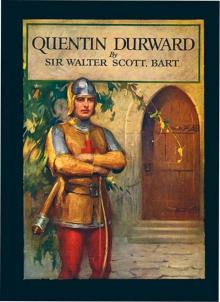 Quentin Durward
Quentin Durward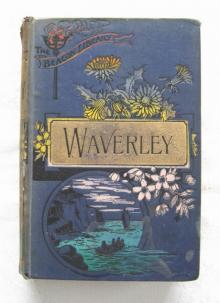 Waverley; Or 'Tis Sixty Years Since — Complete
Waverley; Or 'Tis Sixty Years Since — Complete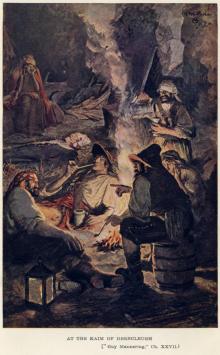 Guy Mannering; or, The Astrologer — Complete
Guy Mannering; or, The Astrologer — Complete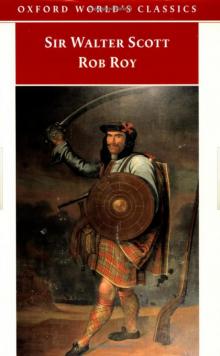 Rob Roy — Complete
Rob Roy — Complete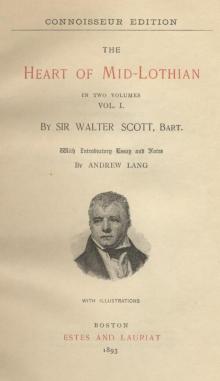 The Heart of Mid-Lothian, Volume 2
The Heart of Mid-Lothian, Volume 2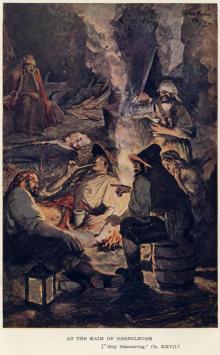 Guy Mannering, Or, the Astrologer — Complete
Guy Mannering, Or, the Astrologer — Complete_preview.jpg) Anne of Geierstein; Or, The Maiden of the Mist. Volume 2 (of 2)
Anne of Geierstein; Or, The Maiden of the Mist. Volume 2 (of 2)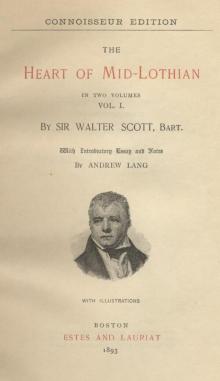 The Heart of Mid-Lothian, Volume 1
The Heart of Mid-Lothian, Volume 1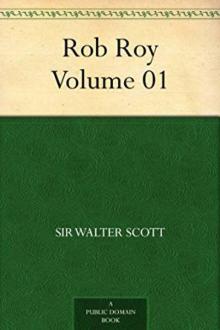 Rob Roy — Volume 01
Rob Roy — Volume 01 Waverley; Or, 'Tis Sixty Years Since — Volume 2
Waverley; Or, 'Tis Sixty Years Since — Volume 2 Waverley; Or, 'Tis Sixty Years Since — Volume 1
Waverley; Or, 'Tis Sixty Years Since — Volume 1 Guy Mannering, Or, the Astrologer — Volume 01
Guy Mannering, Or, the Astrologer — Volume 01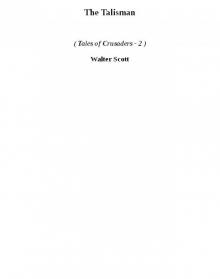 The Talisman toc-2
The Talisman toc-2 Rob Roy
Rob Roy Old Mortality, Volume 2.
Old Mortality, Volume 2. The Betrothed
The Betrothed Waverley
Waverley The Surgeon's Daughter
The Surgeon's Daughter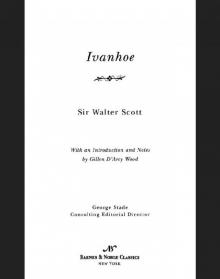 Ivanhoe (Barnes & Noble Classics Series)
Ivanhoe (Barnes & Noble Classics Series) The Antiquary
The Antiquary Letters on Demonology and Witchcraft
Letters on Demonology and Witchcraft Trial of Duncan Terig
Trial of Duncan Terig Redgauntlet
Redgauntlet My Aunt Margaret's Mirror
My Aunt Margaret's Mirror Guy Mannering or The Astrologer
Guy Mannering or The Astrologer Marmion
Marmion The Tapestried Chamber, and Death of the Laird's Jock
The Tapestried Chamber, and Death of the Laird's Jock Chronicles of the Canongate
Chronicles of the Canongate The Fair Maid of Perth or St. Valentine's Day
The Fair Maid of Perth or St. Valentine's Day The Heart of Mid-Lothian
The Heart of Mid-Lothian Lady of the Lake
Lady of the Lake